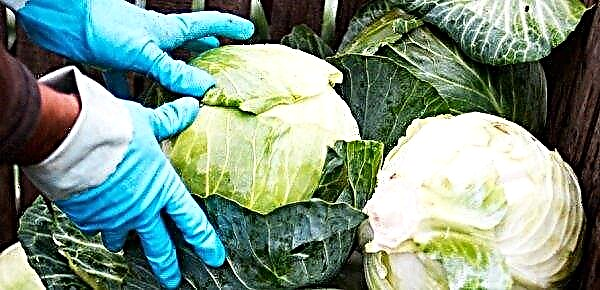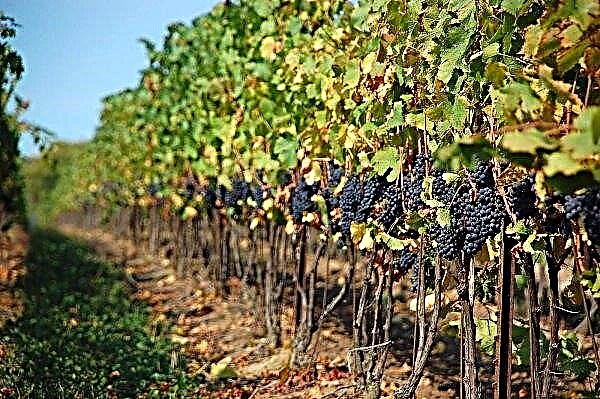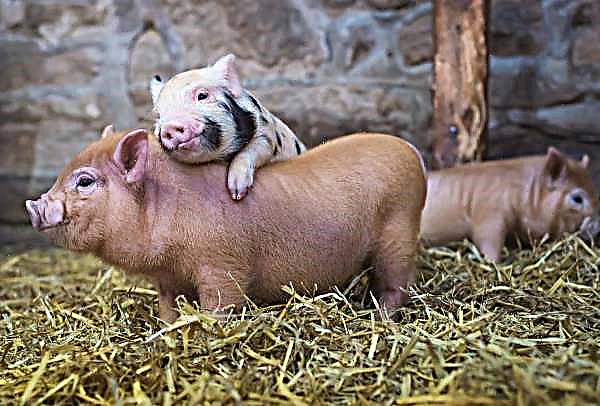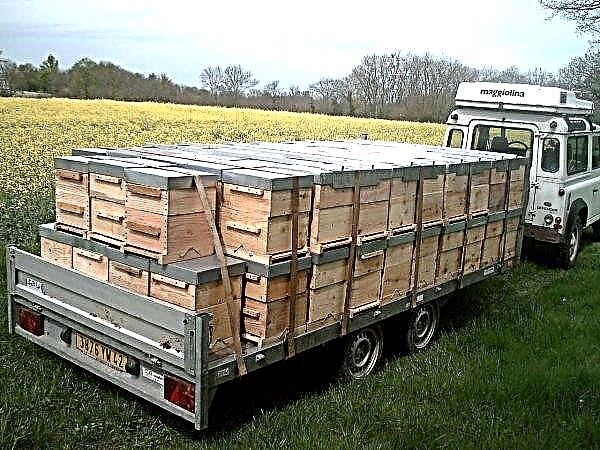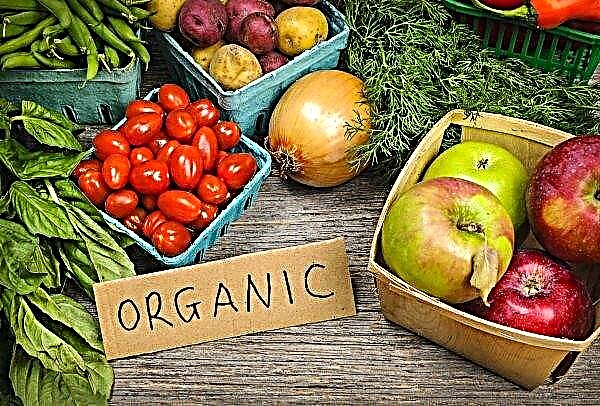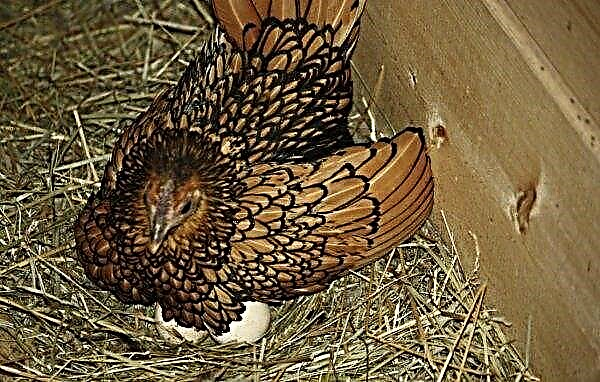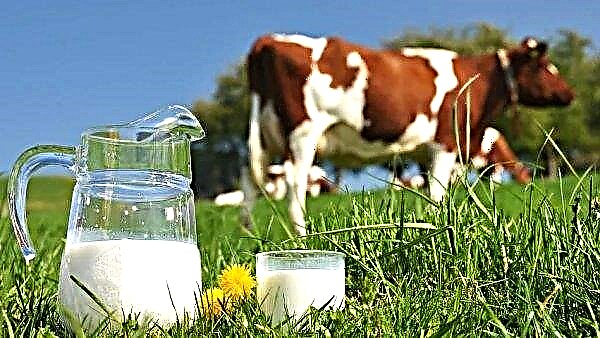After the warm weather is established, I want to taste my cucumbers as early as possible. In this gardener, ultra-early varieties of this crop can help. It is to this variety that the hybrid of cucumbers Kibria belongs. It was bred by the Dutch not so long ago, but has already attracted the attention of vegetable growers. We learn the characteristics of the variety of cucumbers Kibriya, its advantages and disadvantages, how to plant and grow, collect and store.
History of Variety Breeding
This variety was obtained by breeders of the Dutch company Raik Zvaan in 2009. After 2 years, it was brought to the State Register of the Russian Federation. It is suitable for growing in greenhouses and farms. Recommended for the Central and North-Western regions.
Did you know? China — The largest producer of cucumbers. Up to 60% of the total world volume of this vegetable is grown in China.
Description of the variety Kibria
Consider the features of this hybrid of cucumbers more carefully.
Bushes
This plant is an indeterminate type, growing up to 1.5 m in height. Tall bushes have medium-sized green leaves. Lateral shoots are almost not formed, and the bulk of the fruit grows on the main stem. This must be considered when forming. In each node, 1–5 fruits appear. Parthenocarpic type plant, i.e., does not need pollination, with female flowers.
Fruit characterization
In the Kibriya variety, short-fruited cucumbers of an aligned oval shape are formed. The skin is dark green in color, on which there are short white stripes. Its surface is covered with medium-sized tubercles with white spikes. Gather fruits about 10–11 cm in size and weighing up to 90 g.
The pulp of greens does not contain voids, dense and juicy, with good taste characteristics, without bitterness. A variety of universal use, but in the best way shows itself in pickling and other conservation.
Did you know? Cucumbers have few calories. Fresh cucumber contains 15 kcal, salted - 11 kcal. But the calorie content of the pickled product depends on the composition of the marinade. In sweet pickled cucumbers, it reaches already 122 kcal.
Ripening time
The first fruits can be harvested as early as 35–40 days after emergence. Such ultra-early dates allow the use of this variety for cultivation in protected ground, where it can be grown several times from winter to late summer.
Video: Cucumber Cibria F1
Variety Productivity
This hybrid gives high yields. From each 1 m², 13.6–19.3 kg of fruits can be harvested. This is about 2 kg higher than many popular crop varieties.
Advantages and disadvantages of the hybrid
- Kibria cucumber variety can please gardeners as follows:
- very early harvest;
- presentation of fruits;
- good taste;
- universality of use;
- lack of need for pollination;
- resistance to cladosporiosis, cucumber mosaic virus and powdery mildew;
- lack of need for pinching;
- good keeping quality and transportability of products;
- resistance to weather factors.
- The hybrid has very few drawbacks:
- collecting seeds from a hybrid for planting is pointless;
- expensive price of seed material;
- regular fertilizer application;
- poor tolerance of arid and hot conditions.
Landing Features
The seeds of cucumbers of the Kibriya variety can be sown directly into the ground (sheltered or open), but the seedling method can be used to obtain earlier products.
Soil selection and preparation
The place for cucumbers should be adequately lit. Good predecessors for them are cabbage, onions, root vegetables, legumes and some nightshade crops.
In the middle lane, with a close occurrence of groundwater, or on heavy cold soils, it is recommended to plant this crop in the beds. There should be no strong winds at the landing site.Important! It is not recommended to re-plant cucumbers in the same place or after melons and eggplants.
Cucumbers love light nutrient soils with neutral acidity. Sand is added to heavy soils, and acidic - lime. Acidity should be in the range of 6–7 pH. The best soils are loam and sandy loam, and peat-bog land is least suitable. Soil fertility is very important.
To increase it, every autumn or a month before planting, the place where the cucumbers will be planted is fertilized with organics (dung, humus or chicken droppings) when digging. For every 1 m² there should be 5 kg of organic fertilizer. In its absence, you can add mineral complexes suitable for cucumbers, for example, "Agricola" at the rate of 15 g per 1 m². For the prevention of diseases, it is recommended to treat the soil with copper sulfate or sprinkle with ash.
Seed treatment
On the package with seeds, you should look for information about their processing, and if they were not processed, then you need to do it yourself. To do this, the seeds should be placed in a potassium permanganate solution for 20-30 minutes, and then washed under running water and dried.
You can get earlier seedlings and stimulate their growth by soaking the seeds in a solution of a growth stimulant. To do this, you can use the preparations "Zircon", "Epin" or replace them with aloe juice diluted with water in a ratio of 1: 5. The duration of soaking in such solutions is usually 18 hours.
Important! In heated greenhouses, it should be noted that the daylight hours for cucumbers should be at the level of 10-12 hours. The difference between day and night temperatures should be about 6 degrees.
Timing and technology of planting in the ground
Cucumbers are planted in open or protected ground when the soil temperature warms up to +16 ... + 18 ° C and the threat of frost passes. The air temperature should usually be slightly higher. The optimum air temperature is + 25 ° C. Depending on the region of cultivation, these periods fall on the third decade of May or early June. Up to three plants are planted per 1 m² of beds, and up to two at early planting.
Landing Rules
Cucumbers require a certain approach. Let's consider how to care for cucumbers of the Kibria variety.
Watering and feeding
When caring for cucumbers, regular watering should be carried out. To do this, use warm water with a temperature of + 20 ... + 22 ° C. To get a good crop, it is necessary to water 1 m² of planting 6-10 liters of water.
It is better to water yourself under the root, so as not to knock down the ovary and avoid the appearance of sunburn when moisture drops on the leaves. But in cloudy dry weather, sprinkling is allowed. On sunny days, watering is recommended in the morning or evening. During the period of formation and receipt of fruit, watering is increased.
To obtain a large crop, it is necessary to fertilize mineral and organic fertilizers.
For the entire growing season, you need to do at least 3 dressings:
- The first is carried out when the plant forms 3 true leaves. For this, 10 tbsp of water are bred 1 tbsp. l urea and 60 g of superphosphate.
- The second is carried out during the formation of color. It is useful to spray the plant with boric acid - 2 g of the substance is dissolved in 10 l of water. In the same solution, 40 drops of iodine can be added to prevent disease. You can make root top dressing - add 10 g of kalimagnesia and 40 g of superphosphate to 10 liters of water.
- The third is carried out during the period of formation and growth of fruits. To do this, 50 g of urea is diluted in 10 l of water.
Did you know? Cucumbers are used in cosmetics. Lotions and masks with cucumber whiten, tone the skin, help tissue regeneration, moisturize the skin and remove oily sheen.
For top dressing, it is also good to use an infusion of manure. To prepare it, manure is poured with water in a proportion of 1:10 and insisted for 7-12 days. During the second top dressing, mineral fertilizers can be replaced with ash - dissolve a glass of ash in 10 liters of water.
Weeding, loosening and mulching the soil
After each watering, it is necessary to loosen the soil. Loosening is sometimes combined with a small hilling of bushes. During the process, it is also recommended to remove weeds, which pull on themselves nutrients and moisture, which prevent plants from developing.
You can simplify the care work and increase the yield of cucumbers by mulching the beds with compost, mowed dried grass or sawdust. This procedure is especially relevant in areas where there is a likelihood of overheating or freezing of the soil, and positively affects the culture as a whole.
Preventative treatment
To prevent the occurrence of pests at your plantings, you can carry out preventive spraying with insecticidal agents such as "Fufanon", "Inta-vir", "Aktara".
Good results for the prevention of diseases and pests give folk methods:
- Sour milk or whey. Sour milk is mixed with water in equal proportions. In this solution, you can add 30 drops of iodine.
- A solution of baking soda. To prepare it, 50 g of soda is dissolved in 10 l of warm water. For better adhesion add laundry soap.
- Ash solution. It will not only protect plants from fungal diseases and aphids, but also feed them. To prepare it, 300 g of sifted ash is poured with boiling water and boiled for 25 minutes. Then bred in a 10-liter bucket of water. You can add laundry soap. Use once a week.
- The infusion of garlic. For its preparation, 10 crushed cloves pour 1 liter of boiling water. Allow to cool and filter. Before use, add up to 10 liters of water and add laundry soap.
Defeat by Diseases and Pests
Kibria cucumbers are quite resistant to the appearance of various diseases and pests. The main thing is to observe the agricultural technology of growing this plant crop.
Sometimes the plant may be susceptible to the invasion of the following pests:
- Aphid. Insects infect leaves, ovary, color. The plant crop begins to dry, the leaves curl. To combat aphids, chemical preparations of the “Verticillin” type are used. You can wash the plant 3 times a week with a sponge with an ash-soap solution until the aphids disappear.
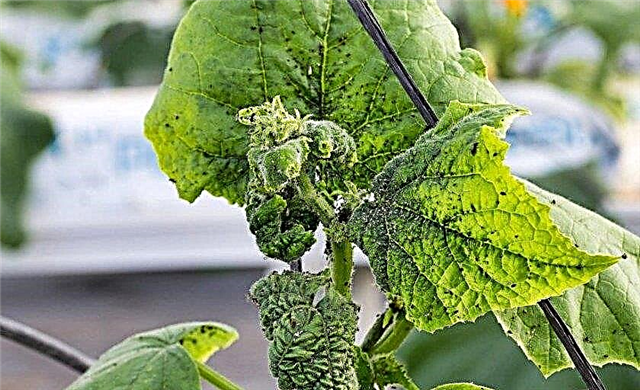
- Whitefly A small insect of white color. To combat it, the drugs "Boverin", "Confidor" are used.
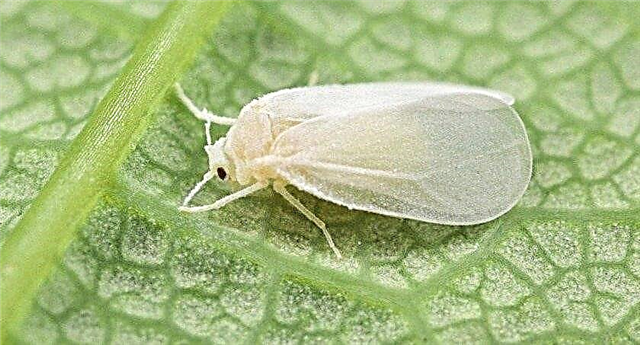
- Thrips. The pest can be identified by the appearance of whitish and yellow spots on the leaves. To eliminate these insects, insecticides “Aktara”, “Fitoverm” or “Komandor” are used.

- Spider mite. You can detect the pest by the appearance of small light inclusions and a thin cobweb. The appearance of ticks provokes dry hot weather. To eliminate this problem, they use the drugs "Actofit", "Fitoverm", and also pay attention to the level of humidity.
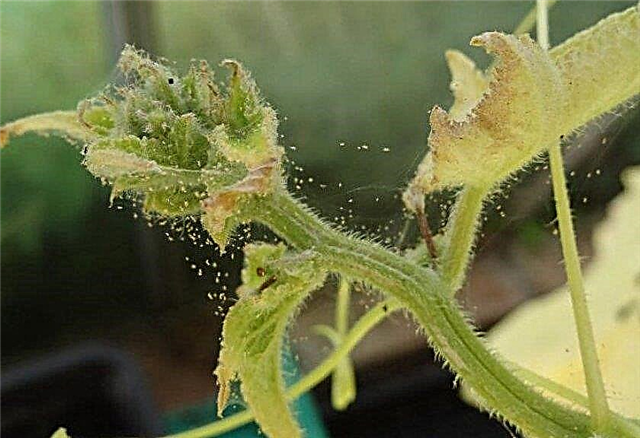
Features of harvesting and storage of crops
Harvested as the fruits ripen, daily. Collect fruits carefully so as not to damage the branches and ovary.
Storage of the harvest is carried out in a cool place with good ventilation. In small quantities, cucumbers can be stored in the refrigerator in the vegetable section (no more than a week).Important! Do not allow the overgrowth of cucumbers, as they lose their quality characteristics, which leads to a decrease in yield.

Kibria cucumbers belong to the Dutch parthenocarpic hybrids. They give an early harvest, can be grown in sheltered and unprotected soil, suitable for use both fresh and canned. The variety is unpretentious, but requires the mandatory introduction of fertilizing and proper watering.
Network user reviews
ADVANTAGES: early, plentiful, tasty
DISADVANTAGES: expensive seeds
As you know, good seeds and stand well. So I bought last year the seeds of cucumbers Kibriya F1. There were only 5 pieces in a pack and they cost 104 rubles, but I did not regret my purchase. This variety is very productive, just universal for growing in a greenhouse. Cucumber Kibriya F1 is a hybrid, it is a pantenocarpic type, early ripening. This plant develops rapidly, forms long, powerful lashes on which small fruits of a dark green color hang. Cucumbers are tasty and crispy, they do not contain bitterness. The abundance of the harvest of this variety can simply be envied. The lashes are dotted with cucumbers, in each node up to 5 fruits are formed. Due to such abundance, I gathered a large crop, it is especially pleasing in the spring, when the body requires vitamins. Kibria F1 cucumbers ripen quickly and amicably. They should be watered in the evening and only at the root. This is necessary to avoid diseases, although this variety is already resistant to viral diseases. I plant seeds in a heated greenhouse at the end of March directly in the soil. To do this, I make holes, pour them with boiling water, cover with a plastic wrap on top. After 3 hours, you can plant. For faster germination, I soak the seeds, let them hatch, and then plant them in the soil. When the first sprouts appear, I cover them with transparent plastic bottles from above, so the cucumbers grow and develop faster. As I grow, I remove them, and I tie the plant to the trellis. I like this variety because it gives few side shoots, which is very good for greenhouses. Cucumbers quickly ripen, you should pick them small, make sure that they do not outgrow. I eat fresh cucumbers, make salads, pickle and preserve them.





